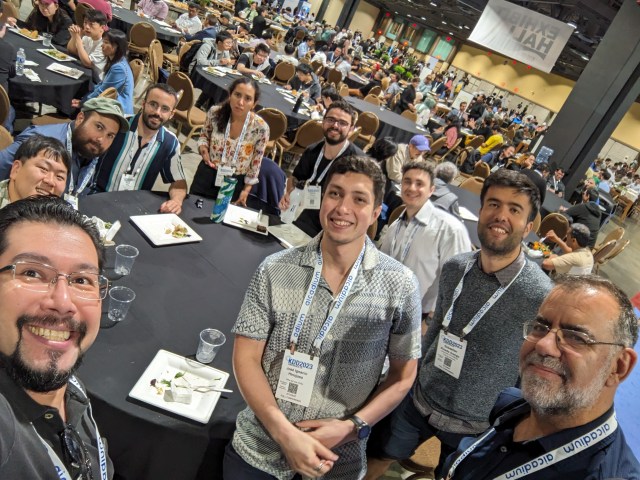We had a great time attending the Credit Scoring and Credit Control Conference XVIII that took place between August 30th to September 1st in Edinburgh, UK. This conference bridges the academic/practitioner divide and is the world’s premier conference for credit scoring and credit risk related topics.
The BAL had a strong presence at the conference with six presentations:
- On August 30th, Cristián presented the work with our PhD student Mahsa Tavakoli, cosupervised by Rohitash Chandra from UNSW, on “Multi-Modal Deep Learning for Midcap Credit Rating Prediction Using Text and Numerical Data”.
- On August 31st we had two presentations:
- Our collaborator Prof. María Óskarsdóttir from Reykjavík University, Iceland, presented the work by our PhD students Sahab Zandi and Kamesh Korangi, cosupervised by Prof. Christophe Mues from Southampton University and Cristián, titled “Credit Scoring with Dynamic Multilayer Graph Neural Networks”.
- Cristián presented the work led by our PhD student Sherly Alfonso Sánchez, cosupervised by Prof. Kristina Sendova here at Western, called “Causal Learning for Credit Limit Adjustment in Revolving Lending Under Adversarial Goals”.
- On September 1st, we had three:
- Daniel Abib, who joined earlier this year as a postdoc at the Lab, presented the work coauthored with Prof. Raffaella Calabrese for Edinburgh University, Prof. María Óskarsdóttir, and Cristián. The work was called “Optimal Feature Split in Credit Risk Models with Dependency”.

- Our PhD student Kamesh Korangi presented the work from his PhD, coauthored with Christophe Mues and Cristián, on “Deep Temporal Graph Networks for Behavioural Scoring Prediction in Revolving Credit Lines”.
- Our PhD student Sahab Zandi presented the work with coautored with Kamesh, and cosupervised by Prof. María Óskarsdóttir, Prof. Christophe Mues, and Cristián. These last two works are part of the collaboration with one of the largest consumer banks in the world. Sahab’s presentation is titled “Modelling Credit Risk Contagion for SMEs over Supply Chains using Dynamic Multilayer Networks”.
- Daniel Abib, who joined earlier this year as a postdoc at the Lab, presented the work coauthored with Prof. Raffaella Calabrese for Edinburgh University, Prof. María Óskarsdóttir, and Cristián. The work was called “Optimal Feature Split in Credit Risk Models with Dependency”.
The conference provided a great opportunity to meet and network with people in the field of credit risk from both academia and industry. We were honestly surprised and happy with the reception that we had from the conference attendants. We had many interesting talks and we look forward to what will come out of these chats!
We also had a blast having a reunion with some friends and colleagues after a while in Edinburgh!











